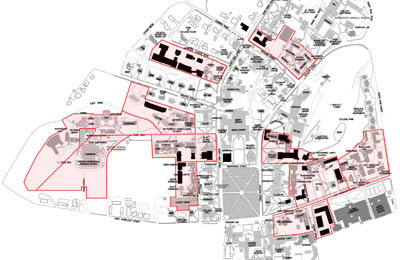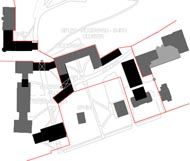Following are some thoughts, inspired in part by the excellent Collegiate Way site, about dividing Dartmouth into a federation of independent “residential colleges.”
This is not a sincere proposal: I do not think that Dartmouth should be divided into residential colleges, and I have no evidence that Dartmouth is considering anything related to residential colleges. The closest Dartmouth has come to something like this in recent years was its creation of the cluster program of the mid-1980s and the construction of the East Wheelock Cluster. That cluster is not a true residential college, and it was not thought of as the start of any kind of campuswide program.
This proposal is meant instead (1) as an exercise that might promote the more efficient development of the campus through small additions, and the improvement of outdoor spaces; and (2) as a suggestion of how, if residential colleges ever were to be created, they should be designed. If Dartmouth actually were to create a residential college system, I suspect that budget constraints and alumni opposition would severely limit the effort. This proposal is meant to show what a wholehearted program would be.

Each of the nine “residential colleges” (here called “consortia” to avoid confusion) is given an average of 400 beds, a faculty resident’s house, and a dining hall.

A variation on one of the consortia in greater detail.
The most important and difficult part is making the buildings contiguous or at least related and giving them legible spaces to surround. The most resistant consortium is the Wheeler-Richardson combination. The group depends on Rollins being brought in as a dining hall and the three buildings being connected, and even then the site has no room for a faculty residence. The SAE house might work, or a new house could be built rather close to the Old Pine.
